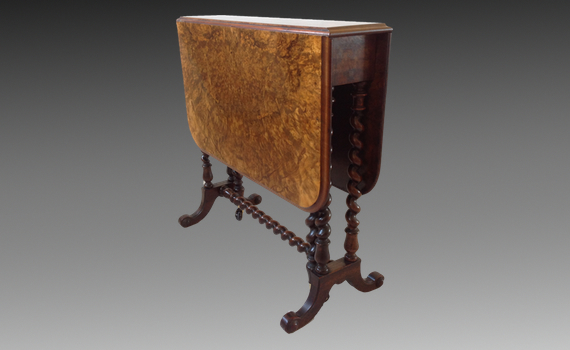
A small figured walnut, Victorian, sutherland table. The rectangular top with twin drop flaps either side, supported by barley twist gate legs, the ends with double barley twist supports and sledge bases. Numbered to base 01748.
English
Circa 1880

A small figured walnut, Victorian, sutherland table. The rectangular top with twin drop flaps either side, supported by barley twist gate legs, the ends with double barley twist supports and sledge bases. Numbered to base 01748.
English
Circa 1880
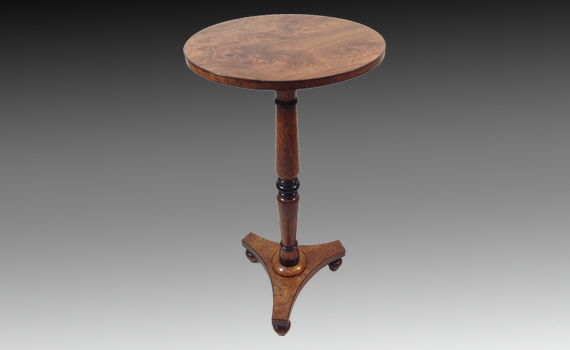
A George IV figured and Burr elm wine table. The circular top with ebony line banding above a turned column with parcel ebonised mouldings and a triform platform base with concave sides and standing on turned feet, weighted with lead.
English
Circa 1825
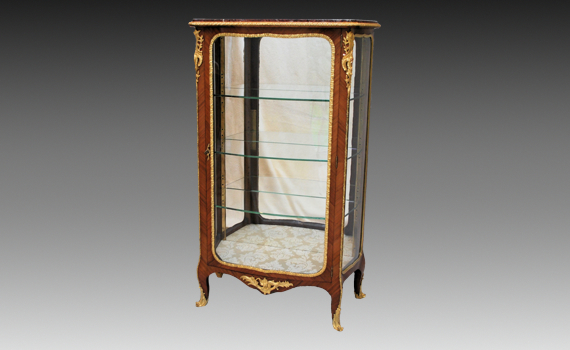
A late 19th century, French, Kingwood and gilt bronze mounted Vitrine. Of serpentine form, the marble inset top above a glazed door, enclosing adjustable glass shelved interior, flanked by glazed sides, standing on short cabriole legs ending in sabots. Original mercuric gilding to mounts.
Circa 1880
French
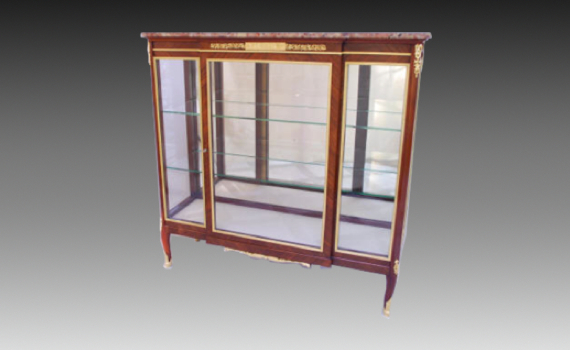
A Napoleon III rosewood and mahogany gilt metal mounted Vitrine. The breche d’alep marble top above a frieze with gilt metal cherub central panel, with a glazed door below enclosing a mirrored back with glass shelves, flanked by glazed sides, standing on cabriole legs with gilt metal sabots.
Circa 1870
French
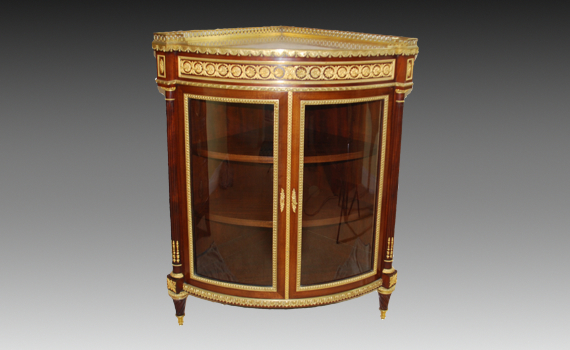
A fine quality late 19th century mahogany and gilt bronze mounted encoignure. The breche d’alep marble top with pierced gallery, above a rosette mounted frieze with a pair of curved glazed doors below, enclosing adjustable shelves, flanked by fluted columns with turned fluted toupie feet. Original mercury gilded bronze mounts.
Circa 1880
French
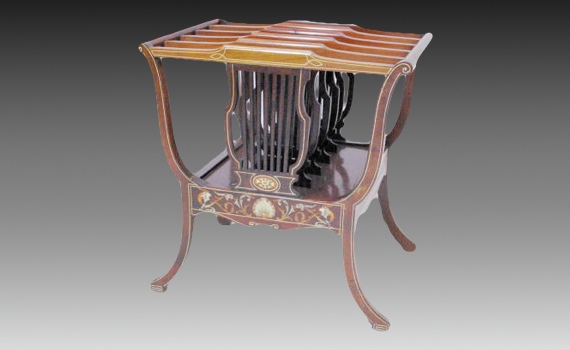
A late 19th century, Victorian, mahogany Canterbury. The five divisions divided by lyre shaped fretwork panels, inlaid with ivory and boxwood marquetry, standing on splay legs.
Circa 1890
English
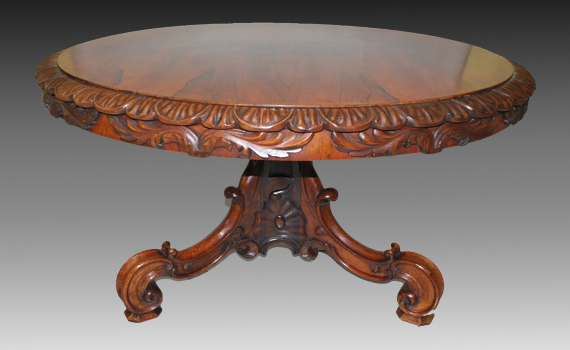
A William IV rosewood tilt-top centre table. The circular top with well figured veneers and leaf carved edge, above a frieze with applied acanthus carved decoration, supported by a triform column with three moulded scrolling legs ending in concealed castors. Good patination.
Circa 1835
English
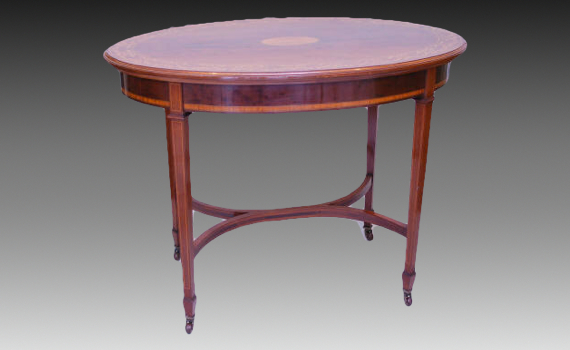
An Edwardian mahogany and inlaid table. The oval top with central medallion and swag inlaid border, above a satinwood crossbanded frieze supported by four square section tapering legs united by a wavy stretcher and ending in spade feet with porcelain castors.
Circa 1900
English
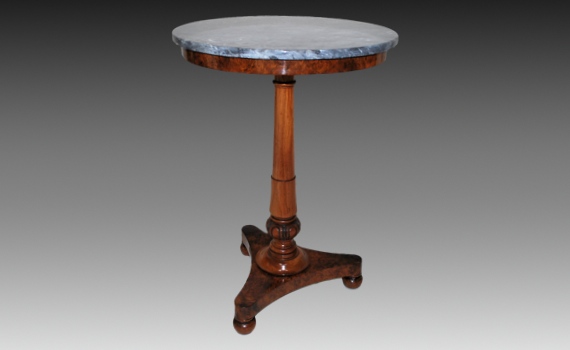
Holland & Sons
A mid 19th Century walnut and marble topped table. The circular replaced grey marble top above a slim frieze supported by a turned column with concave triform base and turned bun feet with concealed castors.
Stamped to the underside Holland & Sons
Circa 1850
English
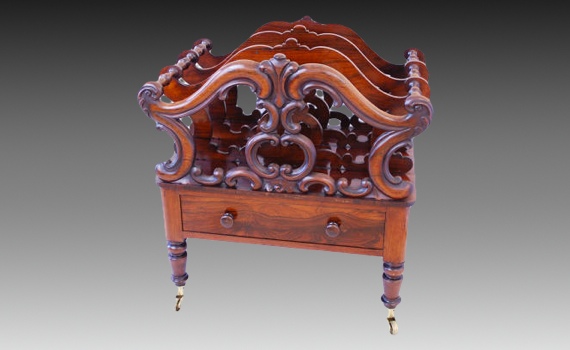
An early Victorian rosewood Canterbury. The scroll carved shaped divisions with turned spindles above a single mahogany lined drawer with turned pulls, supported on four turned legs with original brass caps and castors.
Circa 1840
English
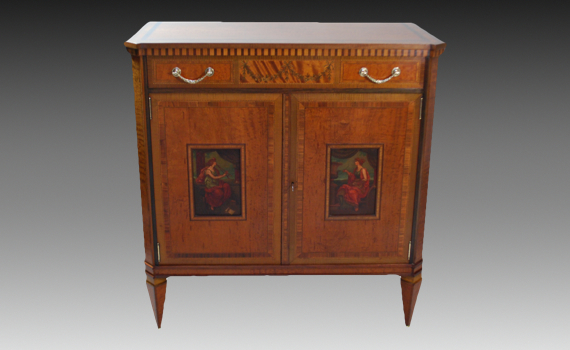
Attributed to Gillows
A late 19th century, Victorian, satinwood and kingwood crossbanded side cabinet. The rectangular top with outset corners, above a single mahogany lined frieze drawer, inlaid with panels and floral swags, above a pair of panelled doors centred by painted panels of classical maidens, standing on tapering square legs with brass ball feet. Fine original condition, retaining the original brass handles.
English
Circa 1890
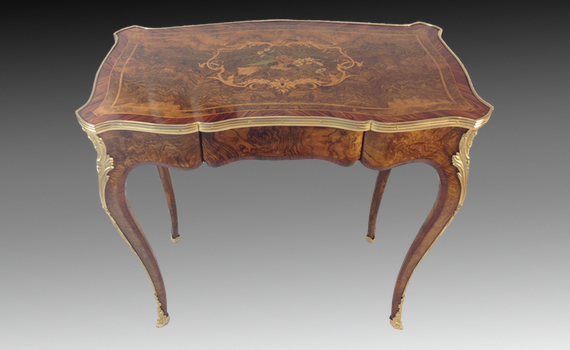
A mid 19th century, Victorian, inlaid walnut, kingwood crossbanded and ormolu mounted side table. The serpentine shaped top with central cartouche of scrolling acanthus enclosing floral inlay with butterflies, with tulipwood and kingwood cross banding, above a base with single short frieze drawer, serpentine sides and cabriole legs ending in ormolu sabots. Mounts re gilded.
English
Circa 1870
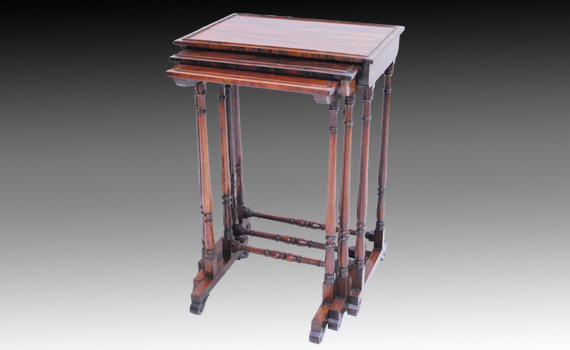
A nest of three George IV rosewood tables. Each with a rectangular top inlaid with a cockbeaded edge, and supported by four ring turned columns with sledge bases and acanthus scroll carved feet.
Circa 1830
English
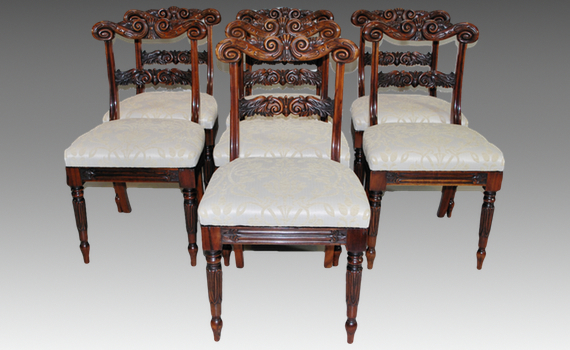
S Hughes Liverpool
A set of seven, George IV, albuera wood dining chairs. Each chair with moulded uprights and scroll carved top rail with acanthus mid rail, standing on lotus carved front turned legs, and reupholstered drop in seats. The corner blocks with impressed stamp S HUGHES
English
Circa 1830
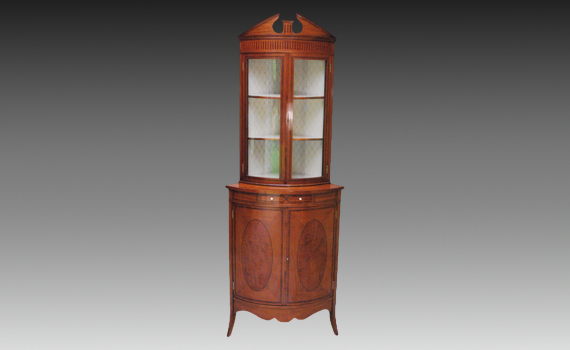
Jas SHOOLBRED & Co
A late 19th century, Victorian, satinwood and satin birch corner cabinet. The pediment above a mock fluted inlaid frieze, with a pair of bowed glazed doors under, enclosing a relined shelved interior. The base with small frieze drawer, retaining original ivory pulls, above further pair of oval inlaid bowed doors, standing on splay feet. Drawer stamped Jas SCHOOLBRED & Co.
English
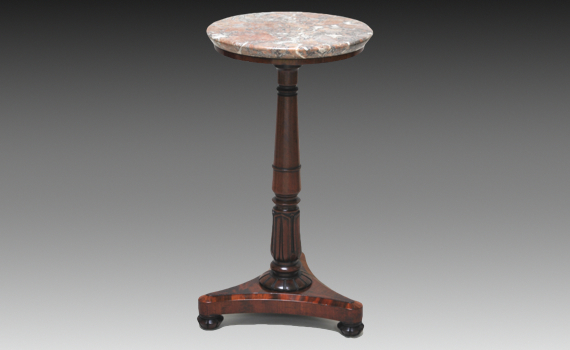
A George IV mahogany and Fleur de Peche side table. The circular marble top with chamfered edge, above a slim frieze, supported by a turned and lappet carved column with triform platform base and three carved turned feet with concealed castors.
Circa 1830
English
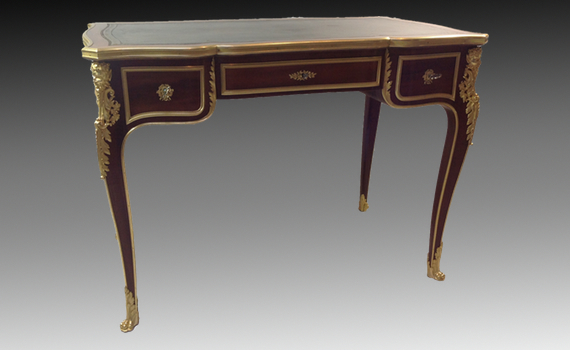
A late 19th century, French, mahogany and gilt bronze mounted bureaux plat. The serpentine shaped top inset with a leather writing surface and banded with a gilt bronze border, above three oak lined frieze drawers with milled gilt bronze bandings and foliate escutcheons, the four cabriole legs headed by bearded satyrs with acanthus leaf fronds and hairy paw sabots. Mounts re gilded.
French
Circa 1890
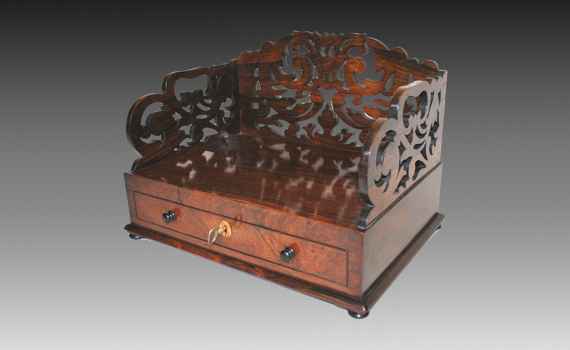
A mid 19th century rosewood book tray. The rectangular tray with open fret cut three quarter gallery, above a single mahogany lined drawer, with turned ebony pulls standing on turned bun feet.
Circa 1850
English
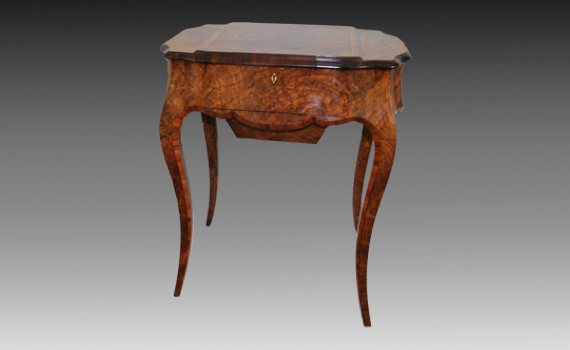
GILLOW
A figured walnut and tulipwood crossbanded work table. The finely figured central rectangular top, flanked by further compartments with flaps opening to the sides, the serpentine shaped sides with wool basket, standing on four slender cabriole legs. Stamped ‘Gillow’ numerous times.
Circa 1860
English
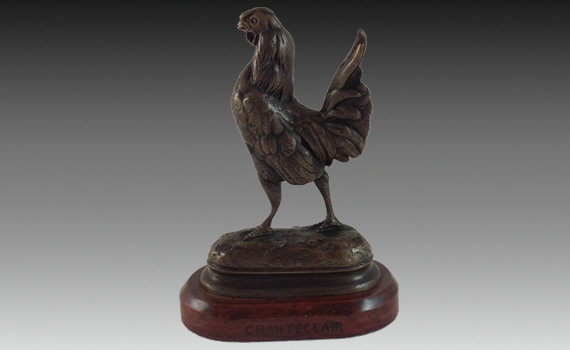
‘Chanteclair’
Alfred Dubucand 1828-1894
A small late 19th century, French, patinated bronze cockerel. The well cast and chased animalier of a proud rooster standing on a naturalistic base with rouge marble plinth titled to the front.
French
Circa 1880